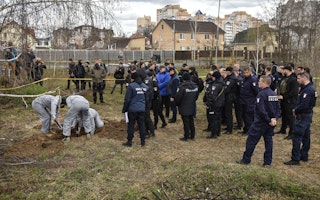How to Use Human Rights Data
In transitional justice contexts, statistics are critical for establishing an accurate assessment of patterns of violence, clarifying historical memory, apportioning reparations, and assigning responsibility for violence. But because raw data can be deeply misleading, making accurate statistical arguments related to human rights violations can be extremely difficult.
Statistical patterns in raw data tend to be quite different than patterns in the real world: patterns in data usually reflect how the data was collected rather than changes in real-world phenomena.
At a recent lecture, Patrick Ball, executive director of the Human Rights Data Analysis Group, used analysis of killings in Iraq and Syria, homicides by police in the United States, and homicides in Colombia to explore how biases in raw data can be corrected through estimation, and why understanding the accurate statistical patterns of violence is essential to advancing rights and justice.
Listen above.


